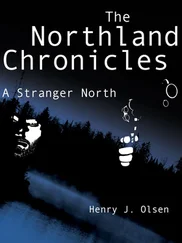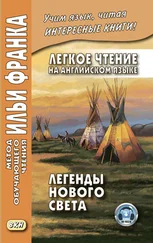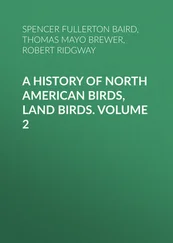North American Agroforestry
Здесь есть возможность читать онлайн «North American Agroforestry» — ознакомительный отрывок электронной книги совершенно бесплатно, а после прочтения отрывка купить полную версию. В некоторых случаях можно слушать аудио, скачать через торрент в формате fb2 и присутствует краткое содержание. Жанр: unrecognised, на английском языке. Описание произведения, (предисловие) а так же отзывы посетителей доступны на портале библиотеки ЛибКат.
- Название:North American Agroforestry
- Автор:
- Жанр:
- Год:неизвестен
- ISBN:нет данных
- Рейтинг книги:4 / 5. Голосов: 1
-
Избранное:Добавить в избранное
- Отзывы:
-
Ваша оценка:
- 80
- 1
- 2
- 3
- 4
- 5
North American Agroforestry: краткое содержание, описание и аннотация
Предлагаем к чтению аннотацию, описание, краткое содержание или предисловие (зависит от того, что написал сам автор книги «North American Agroforestry»). Если вы не нашли необходимую информацию о книге — напишите в комментариях, мы постараемся отыскать её.
Explore the many benefits of alternative land-use systems with this incisive resource North American Agroforestry
North American Agroforestry
North American Agroforestry — читать онлайн ознакомительный отрывок
Ниже представлен текст книги, разбитый по страницам. Система сохранения места последней прочитанной страницы, позволяет с удобством читать онлайн бесплатно книгу «North American Agroforestry», без необходимости каждый раз заново искать на чём Вы остановились. Поставьте закладку, и сможете в любой момент перейти на страницу, на которой закончили чтение.
Интервал:
Закладка:
Gibbs et al. (2016), in their study in Ontario, Canada, found that tree‐based intercropping systems enhanced avian species diversity compared with old fields and monocropped areas. When a pasture is converted to agroforestry, birds normally associated with woodlands are being attracted to agroforestry and, along with birds normally found in open fields, create a unique assemblage of species. Mcadam, Sibbald, Teklehaimanot, and Eason (2007) examined the effect of temperate silvopastoral systems on certain invertebrate groups, including carabid beetles and spiders, and on the number of individuals and species of birds. They reported that the presence of trees on grasslands attracted invertebrates, which might have provided an enhanced food supply, which attracted birds. They concluded that, even at an early stage, silvopastoral systems had a positive impact on birds and could significantly enhance biodiversity.
Bobryk et al. (2016) demonstrated that the overall acoustic complexity index (ACI), a measure of species richness based on the sonic environment, was higher for a pecan alley‐cropping system and a silvopasture system than a soybean monoculture in Missouri. There was a weak but significant relationship ( R 2= .30) between the ACI and overall structural complexity across different land‐use systems. The sound sources identified included birds, amphibians, insects, and mammals. They concluded that habitat heterogeneity created by agroforestry was the reason for the acoustic and thereby species diversity observed in their study.
Competitive Interactions—Belowground
Despite the ability of many tree species to develop taproots that extend deep into the soil profile, typically most of the tree and crop roots in an agroforestry system are within the top 30 cm of the soil profile (Jose, Gillespie, Seifert, Mengel, & Pope, 2000; Jose, Williams, & Zamora, 2006; Zamora, Jose, & Nair, 2007). Consequently, there is intense competition for soil, water, and nutrients within the top 30 cm of the soil profile, which can affect crop production (Alley, Garrett, McGraw, & Blanche, 1999; Delate, Holzmueller, Mize, Frederick, & Brummer, 2005; Jose, Gillespie, Seifert, Mengel, & Pope, 2000; Zamora et al., 2007). For example, maize yields were 35 and 33% lower for black walnut and red oak alley‐cropping systems, respectively, than for conventional crop systems (Jose, Gillespie, Seifert, Mengel, & Pope, 2000). Zamora et al. (2007) reported that belowground competition reduced the total root length in cotton plants by 33% when grown in a pecan–cotton alley‐cropping system in Florida compared with cotton plants grown in a monoculture. Furthermore, they reported that cotton plants in the alley‐cropped system had lower plant biomass production and root/shoot ratios than cotton plants grown in the monoculture system ( Table 4–3). Competition between trees and crops can negatively affect tree growth as well. Delate et al. (2005) reported that, 4 yr after planting, trees planted with forage crops exhibited significantly less growth than the same tree species growing in a competition‐free environment in a bottomland hardwood alley‐cropping system in central Iowa.
Table 4–3. Dry weight (DW) growth parameters of cotton grown in non‐barrier, barrier, and monoculture treatments in the 2002 and 2003 growing seasons (modified from Zamora et al., 2007).
| Treatment | Whole plant DW | Root DW | Shoot DW | Root/shoot ratio |
|---|---|---|---|---|
| ———————— g plant −1———————— | ||||
| 2002 | ||||
| Non‐barrier | 29.78 b (2.67) | 13.53 c (0.43) | 26.25 b (1.81) | 0.12 c (0.02) |
| Barrier | 54.04 a (3.76) | 17.60 b (0.23) | 46.44 a (2.54) | 0.16 b (0.01) |
| Monoculture | 57.33 a (3.71) | 18.70 a (0.69) | 48.63 a (3.07) | 0.19 a (0.01) |
| 2003 | ||||
| Non‐barrier | 25.13 c (1.88) | 12.83 c (0.21) | 22.29 c (1.71) | 0.13 c (0.01) |
| Barrier | 50.76 b (3.85) | 16.88 b (0.41) | 43.88 b (3.56) | 0.16 b (0.01) |
| Monoculture | 72.60 a (5.71) | 12.19 a (0.96) | 60.40 a (4.95) | 0.21 a (0.01) |
Note . In a given column for every growing season, means followed by a different letters are significantly different at α = 0.05. The standard error of the mean is given in parentheses.
Competition for water
Although belowground competition has been documented in many agroforestry systems, it is difficult to separate the belowground competition for water from that for nutrients. Competition for water, however, has been detected in some temperate agroforestry systems. In a silvopastoral study in the Canterbury region of New Zealand, Yanusa et al. (2005) reported a slightly lower water potential in radiata pine ( Pinus radiata D. Don) trees planted in an alfalfa ( Medicago sativa L.) pasture compared with trees growing in a vegetation‐free control treatment. Competition for water led to a 44% decrease in instantaneous CO 2assimilation, a 48% decrease in stomatal conductance, and a 64% decrease in growth between trees growing in the alfalfa pasture and trees growing in the alfalfa‐free control treatment (Yanusa et al., 2005). In a recent study in a temperate silvopasture system in Patagonia, Argentina, Quinteros, Bava, Bernal, Gobbi, and Defosse (2017) studied the competition effects of herbaceous vegetation on the survival, growth, and plant water relations of planted Nothofagus pumilio seedlings and observed higher survival and growth and better plant water status where competition from herbaceous vegetation was controlled, indicating strong interspecific competition otherwise.
Water stress has also been found to affect crop plants. Multiple studies have reported large reductions in crop plant height (NeSmith & Ritchie, 1992a; Wanvestraut et al., 2004) and leaf area (Jose, Gillespie, Seifert, & Biehle, 2000; NeSmith & Ritchie, 1992b) and yield (Gillespie et al., 2000; Wanvestraut et al., 2004) when water is a limiting factor. Wanvestraut et al. (2004) also observed competition for water in a pecan–cotton alley‐cropping system in Florida. By the end of the growing season, cotton plants in the barrier treatment were 26% taller and had 48% greater leaf area than non‐barrier plants. Therefore, it is not surprising that cotton lint yield was 35% higher in the trenched barrier treatment than the control. Results similar to those of Wanvestraut et al. (2004) were reported in a black walnut–maize alley‐cropping study conducted in Indiana (Gillespie et al., 2000; Jose, Gillespie, Seifert, & Biehle, 2000). Jose, Gillespie, Seifert, and Biehle (2000) reported a 21% increase in maize leaf area in the barrier treatment compared with the non‐barrier treatment. In a companion study, Gillespie et al. (2000) reported a decreased maize yield when comparing alley‐grown maize separated from the tree rows by a polyethylene root barrier versus alley‐grown maize with no root barrier. By quantifying competition for water in the black walnut–maize alley‐cropping system, Jose, Gillespie, Seifert, and Biehle (2000) concluded that severe competition for water was occurring between the trees and crops.
It is important to note that interspecific competition for water becomes increasingly intense when water levels decrease throughout the soil profile (Miller & Pallardy, 2001). Factors such as drought, the water holding capacity of the soil, and irrigation all play a role in the degree to which competition for water limits plant growth and productivity. Competition for water can be minimal given adequate levels of precipitation and/or irrigation in an agroforestry system.
Читать дальшеИнтервал:
Закладка:
Похожие книги на «North American Agroforestry»
Представляем Вашему вниманию похожие книги на «North American Agroforestry» списком для выбора. Мы отобрали схожую по названию и смыслу литературу в надежде предоставить читателям больше вариантов отыскать новые, интересные, ещё непрочитанные произведения.
Обсуждение, отзывы о книге «North American Agroforestry» и просто собственные мнения читателей. Оставьте ваши комментарии, напишите, что Вы думаете о произведении, его смысле или главных героях. Укажите что конкретно понравилось, а что нет, и почему Вы так считаете.












